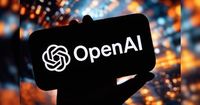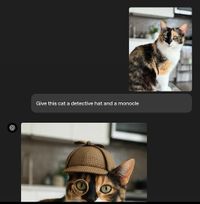OpenAI has unveiled a groundbreaking update to its ChatGPT platform, introducing native text-to-image generation capabilities through the new GPT-4o model. During a livestream event on March 25, 2025, CEO Sam Altman announced this significant enhancement, marking the first major update of the year for ChatGPT. This new feature allows users to create and modify images directly within ChatGPT, eliminating the need for separate tools like DALL-E.
According to a statement provided to the Wall Street Journal, the GPT-4o model has been trained on a combination of publicly available data and proprietary data sourced from partnerships with companies such as Shutterstock. This training has enabled the model to generate images that are not only visually appealing but also highly functional.
One of the standout features of GPT-4o is its ability to handle complex image generation tasks. OpenAI described the model as a multimodal AI capable of editing existing images, including those featuring people. Users can transform these images or even "inpaint" details, allowing for a high level of customization. Importantly, GPT-4o can accurately process prompts involving up to 10-20 different objects, a significant improvement over previous systems that struggled with just 5-8 objects.
OpenAI emphasized that the image generation process adheres closely to user prompts, with a particular strength in rendering text and symbols within images. This attention to detail aims to enhance the clarity of communication through visuals, making it easier for users to convey their ideas effectively.
During the livestream, Altman showcased several examples demonstrating GPT-4o's capabilities, highlighting its proficiency in creating images based on user descriptions. The feature is currently live for users subscribed to the $200-per-month Pro plan, with plans to roll it out to ChatGPT Plus and free users in the near future. Developers will also gain access to the platform through its API.
In addition to the image generation capabilities, OpenAI has integrated several key features into GPT-4o that enhance user experience. These include:
- Interactive Refinement: Users can engage in multi-turn interactions, refining images through conversation. For example, when designing a video game character, GPT-4o ensures that traits and features remain consistent across iterations.
- Contextual Awareness: The system analyzes and learns from user-uploaded images, integrating their details to inform and enhance its image generation.
- Stylistic Variety and Realism: With training on a wide range of styles, GPT-4o can produce photorealistic images or transform visuals into artistic representations tailored to user preferences.
Despite these advancements, OpenAI acknowledges some limitations of the GPT-4o Image Generation feature. For instance, the model has been noted to crop longer images, such as posters, too tightly, particularly near the bottom. OpenAI has committed to addressing these issues in future updates.
OpenAI also reiterated its commitment to ethical and responsible AI use, implementing several safety features to ensure the responsible generation of images. These include:
- C2PA Metadata: All generated images will include C2PA metadata, marking them as AI-generated to promote transparency.
- Internal Search Tools: Proprietary tools will allow verification of content origins using technical attributes.
- Strict Policy Enforcement: OpenAI has established guidelines that block requests for content that violates safety protocols, including graphic violence, explicit imagery, or harmful deepfakes. Enhanced safeguards are in place for images involving real individuals.
- Reasoning LLM Integration: The development of GPT-4o involved a reasoning-based language model to help resolve ambiguities in safety policies, ensuring alignment with OpenAI's ethical standards.
OpenAI's announcement comes at a time when the role of visual tools in communication is more critical than ever. From ancient cave paintings to modern infographics, humans have relied on visuals to convey information. GPT-4o aims to bridge the gap between artistic expression and practical utility, enabling users to create visuals such as logos, diagrams, and informational designs that communicate precise meanings.
The rollout of GPT-4o began on March 25, 2025, making the new image generation feature available to Plus, Pro, Team, and Free users of ChatGPT. Access for Enterprise and Edu users is expected to follow shortly. Additionally, users of Sora, OpenAI's AI-powered video creation tool, now have access to GPT-4o's image generation capabilities. OpenAI noted that developers would gain API access within the coming weeks, allowing them to integrate these advanced features into their applications.
Users can generate customized visuals simply by describing their requirements through GPT-4o, supporting detailed specifications such as aspect ratios, color hex codes, and transparent backgrounds. However, OpenAI highlighted that rendering these highly detailed images may take up to one minute, which users should consider when utilizing the tool.
As OpenAI continues to innovate in the field of artificial intelligence, the introduction of GPT-4o Image Generation marks a significant step forward in making image creation more accessible and efficient. With its robust capabilities and commitment to ethical practices, OpenAI is poised to lead the way in the evolving landscape of AI-powered image generation.


